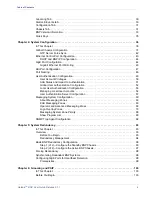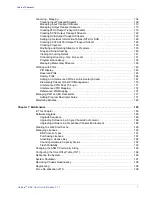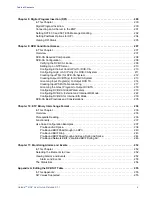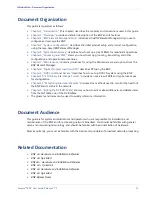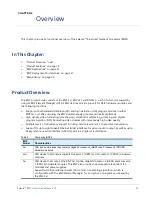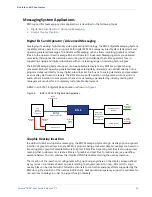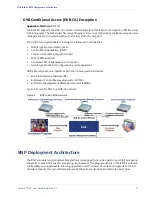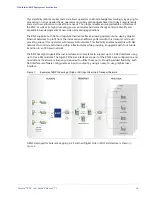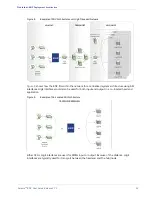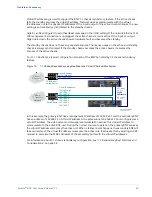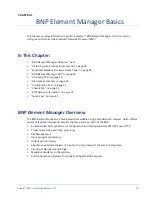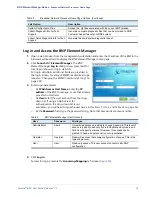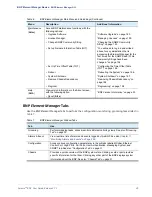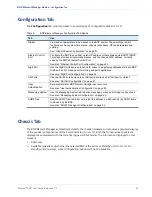
Selenio
TM
BNP User Guide, Release 3.7.1
20
Overview
- Redundancy
Redundancy
Since a single BNP may deliver advanced video services to tens or even thousands of subscribers in a
video network, it is critical that the BNP provide a high availability of services. To achieve such reliability,
the BNP supports a multi-level redundancy feature to ensure service availability and reduce system
downtime. With proper configuration, the BNP can provide full chassis-level redundancy. On the
hardware level, a BNP provides fan, power, and chassis redundancy; on the software level, the BNP
Gigabit Ethernet port redundancy and a configurable program service redundancy feature.
Four user-configurable redundancy options are supported by the BNP:
•
Source Specific Multicast (SSM) Redundancy
•
Program Redundancy
•
Port Redundancy
•
1:1 Chassis Redundancy
The first three redundancies—SSM, Program, and Port—operate within a single BNP chassis. The
fourth—1:1 Chassis Redundancy—makes use of two BNP chassis. The redundancy for hot-swappable
fan trays and power supply modules happens automatically.
Source Specific Muliticast (SSM) Redundancy
The BNP supports the configuration of up to four source IP addresses per multicast input TS. The BNP
will join one of the four source specific multicasts, when configured. When the input PAT from the
current source times out, then BNP will switch to another source configured for that input TS. All the
streams coming from various sources must be identical (PIDs, program numbers, number of programs
etc.). Therefore, it does not matter which source specific multicast the BNP joins and receives program
information from at any given instance. Also, there is no priority associated with configured sources.
BNP achieves source redundancy using IGMPv3 SSM joins and leave messages. When SSM redundancy
is configured for an input TS, the BNP joins the first configured source specific multicast and waits a
maximum of two seconds for the reception of the PAT. If the PAT is not received in two seconds, then
BNP joins the next configured SSM and repeats the process until it receives a PAT. Video could be
interrupted for up to three seconds (in worst case).
SSM redundancy cannot be coupled with program redundancy on the same input TS.
Because SSM Redundancy requires IGMPv3, the router/switch connected to the GigE port of the input
transport stream must have IGMPv3 enabled.
For information on configuring SSM redundancy, refer to “Creating Input Transport Streams” on
Program Redundancy
The BNP supports program redundancy, which is sometimes referred to as service-level redundancy.
For this type of redundancy, when the primary program is gone, the BNP automatically switches to a
redundant or backup program. If any elementary streams are missing from one of the ports, the BNP
switches to the secondary port.
In a program redundancy configuration, a switch to backup occurs when:
•
Missing MPTS/SPTS streams are identified by checking the PAT.

